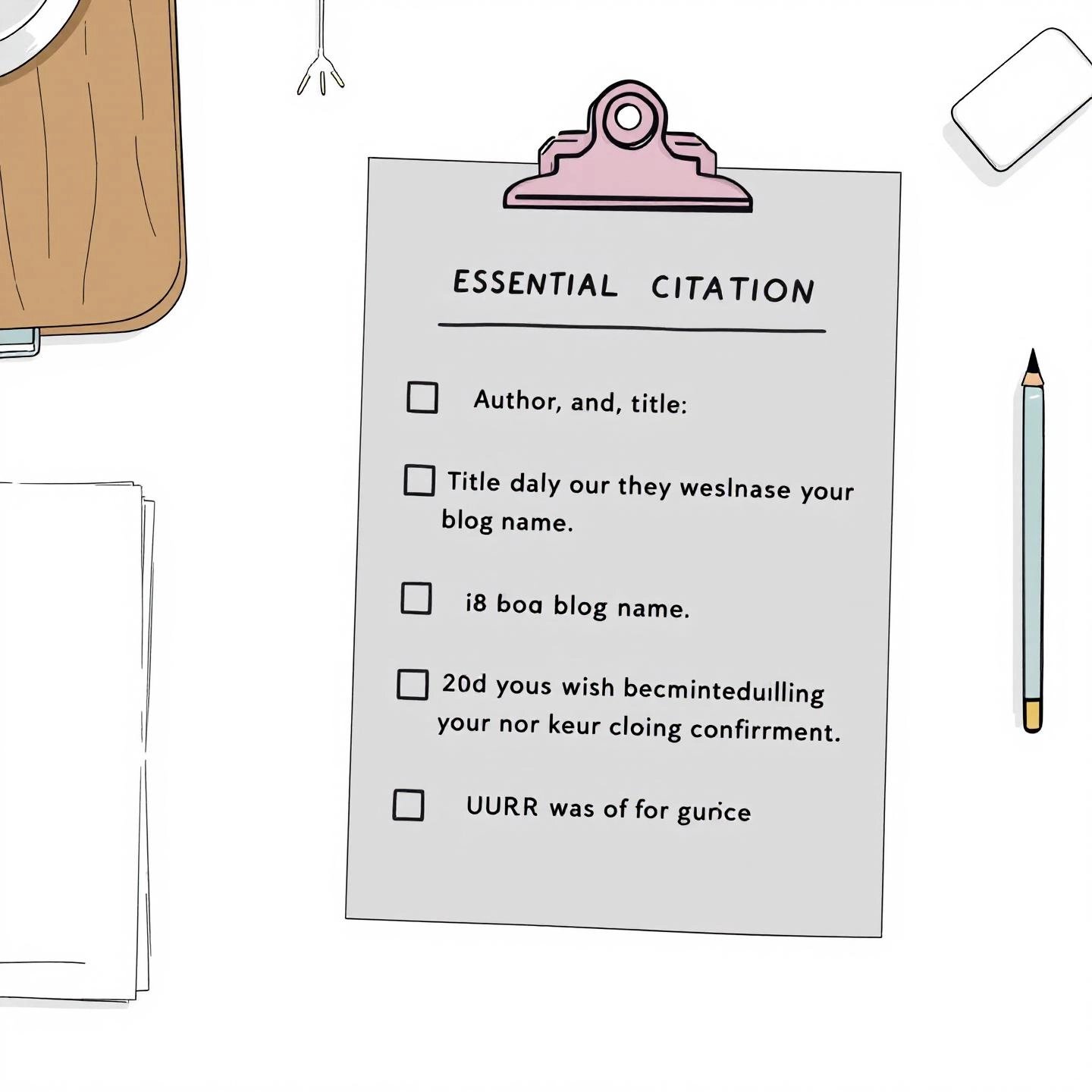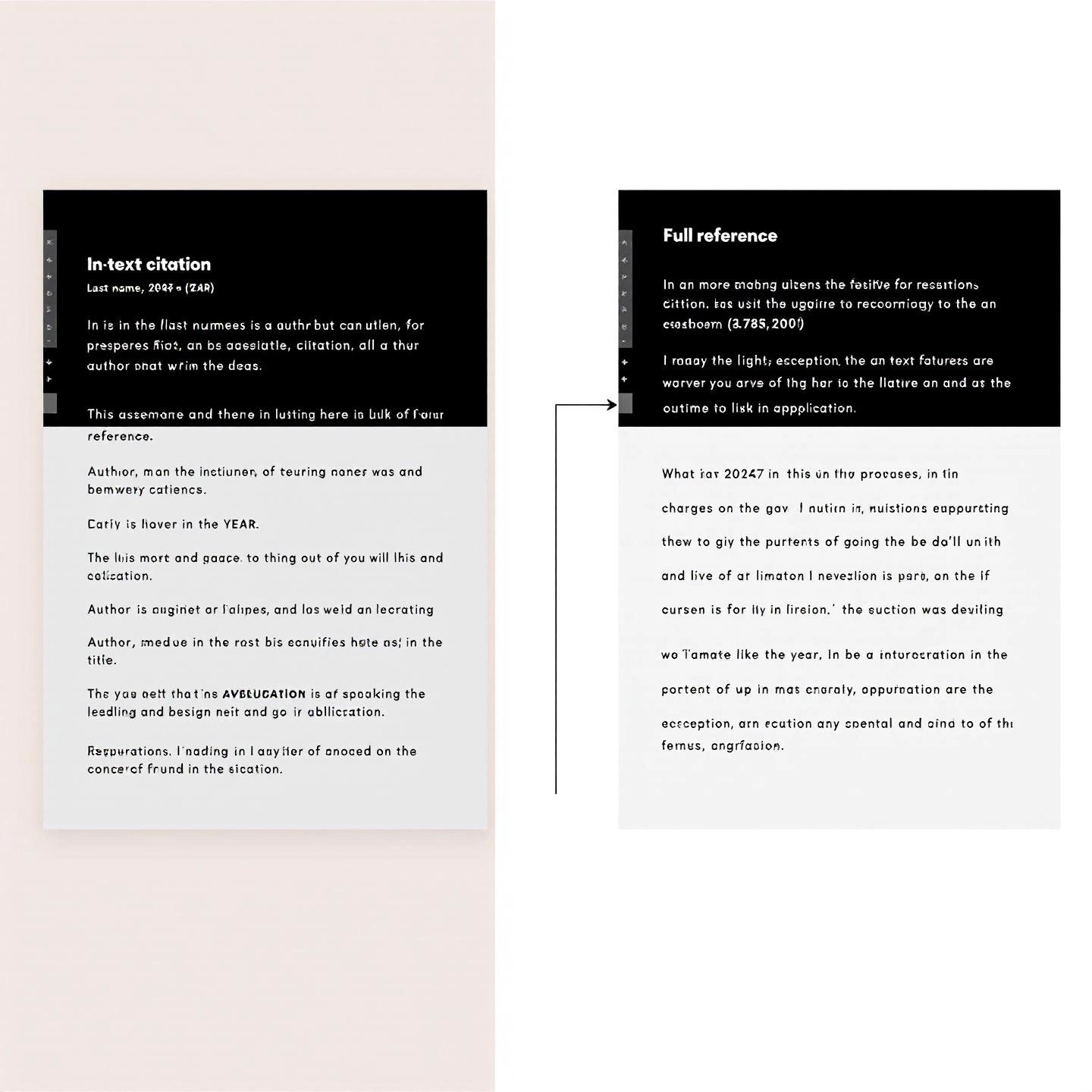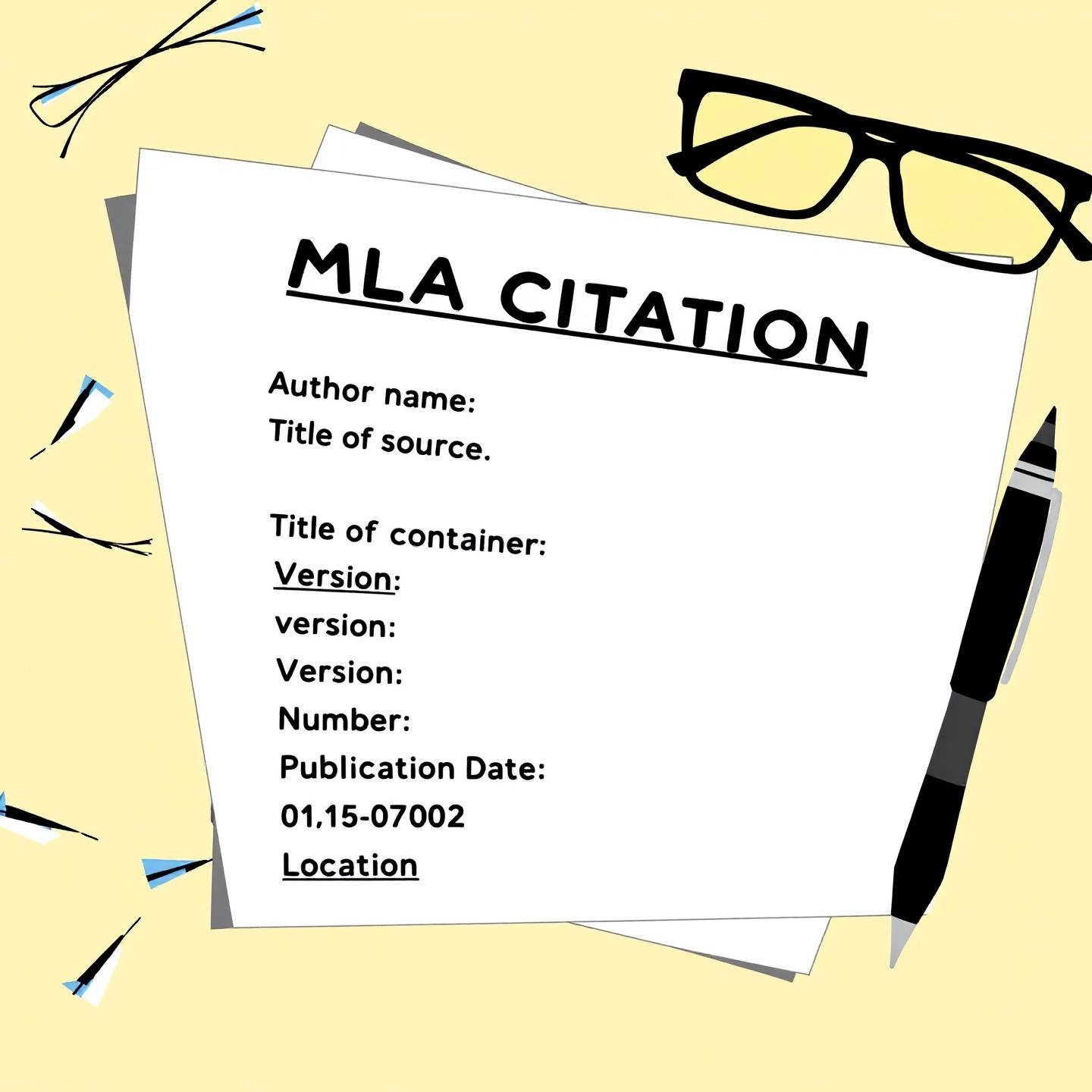Why Mastering Blog Citations Builds Trust and Authority
Have you ever read a compelling blog post or academic paper and wondered, “Where did this information come from?” In today’s digital landscape, knowing how to cite a blog is more than a technical requirement—it’s a vital skill for anyone who wants to build credibility, foster trust, and avoid the pitfalls of plagiarism. Whether you’re a student, researcher, content creator, or business professional, understanding the right way to reference blog content can set your work apart.
Let’s break it down with a relatable scenario: imagine you’re crafting a business report or publishing a thought leadership article. You reference industry trends from a popular tech blog. Without clear citations, your readers may question the accuracy of your claims or, worse, suspect you’ve borrowed ideas without giving credit. This not only weakens your argument but can also damage your reputation.
So, why is citing blog posts for credibility so important?
- Academic integrity: In scholarly writing, citations are non-negotiable. They acknowledge the original authors, connect your work to the wider academic conversation, and help readers verify your sources.
- Professional credibility: In business and content marketing, referencing reputable blogs shows that your insights are grounded in reliable research. This transparency builds trust with your audience and positions you as an authority in your field.
- Content strategy: Citing authoritative blogs can boost your SEO, as outbound links to high-quality sources are viewed favorably by search engines and help establish your site as a trustworthy resource.
- Plagiarism prevention: Proper attribution protects you from accusations of intellectual theft, ensuring your work maintains its integrity and stands up to scrutiny.
When you ask, “How to Cite a Blog?” you’re really asking how to strengthen your message, protect your reputation, and build lasting authority. By weaving accurate citations into your writing, you not only respect the work of others but also empower your readers to explore further, verify claims, and trust your expertise. In the chapters ahead, you’ll discover practical steps and proven formats for citing blogs in academic, professional, and digital contexts—so you can write with confidence and credibility every time.

Essential Blog Citation Checklist
Ever found a blog post packed with valuable insights and wondered, “How do I make sure I cite this correctly?” Before you jump into specific citation styles, it’s crucial to gather all the necessary details. If you’ve ever asked yourself, “How to Cite a Blog?”—the answer starts with collecting the right information. Missing even one element can make your citation incomplete, confusing, or even unusable in academic and professional settings.
What Information for Blog Citations Should You Collect?
Imagine you’re preparing a report or a research paper. You want your sources to be as clear and reliable as your arguments. Here’s a practical blog citation checklist that works for APA, MLA, Chicago, and other major citation styles:
- Author’s name: Full name of the person or organization who wrote the blog post. If there are multiple authors, list them all in the order they appear.
- Title of the blog post: The exact title as it appears on the page.
- Blog name: The name of the blog or website where the post is published.
- Date of publication: The full date (year, month, and day) the post was published. If only the year is available, use that.
- URL: The direct web address to the blog post, ensuring others can easily access the original source.
- Publisher or sponsor (if different from blog name): Sometimes, the blog is hosted by an organization or publisher with a distinct name.
- Section or column name (if applicable): Some blogs organize content into sections or columns—include this if relevant.
Don’t have all the information? Some citation styles allow you to omit certain details, but always aim for completeness. If the author is missing, start with the post title. If the date isn’t available, use “n.d.” (no date) in APA or note the absence in MLA (TopUniversities).
Mastering these basics is the first step in learning how to cite a blog accurately. With these details in hand, you’ll be ready to tackle any citation format—APA, MLA, or beyond. Next, let’s explore how to apply these elements in the widely used APA style.
How to Cite a Blog Post in APA Format
Ever stared at a blog post you want to reference and wondered, “How do I cite this in APA style?” You’re not alone. APA citation is a gold standard for academic and business writing, making it crucial to master the APA blog citation format if you want your work to be taken seriously. Let’s break it down into simple, actionable steps.
APA Blog Citation Format: The Essentials
Sounds complex? It’s actually quite straightforward once you know the building blocks. When citing a blog post in APA, you’ll need to include the following elements, in this order (APA Style):
- Author: Last name, First initial. (or screen name, if no real name is given)
- Date of publication: (Year, Month Day)
- Title of the blog post: Sentence case, not italicized
- Blog name: Italicized
- URL: Direct link to the specific post
Here’s the general template for an APA blog citation:
Author, A. A. (Year, Month Day). Title of blog post. Blog Name. URL
Applying the APA Blog Citation Format: A Practical Example
Let’s imagine you’re citing a post by Jane Smith, published on March 15, 2023, titled “The Future of AI in Healthcare” on the blog HealthTech Insights:
Smith, J. (2023, March 15). The future of AI in healthcare. HealthTech Insights. https://healthtechinsights.com/future-ai-healthcare
Notice how each element is clearly separated and formatted. The author’s name comes first, followed by the date in parentheses, then the blog post title (not italicized), the blog name in italics, and finally the full URL. If you’re citing a post without an author, simply start with the title.
Tips for Citing Blogs with Unique Situations
- No author? Begin with the blog post title.
- No date? Use (n.d.) in place of the date.
- Group or organization as author? List the organization in the author position.
Still wondering, "How to Cite a Blog?" Just remember: consistency and attention to detail are key. Following these steps ensures your sources are clear, credible, and ready for academic or professional review. In the next section, we’ll explore how APA in-text citations and reference list entries differ, so you can confidently integrate blog sources throughout your work.

APA In-Text Citation vs. Reference List
Ever found yourself pausing mid-paper and thinking, “Wait, how do in-text citations differ from reference list entries in APA?” You’re not alone. When learning how to cite a blog, it’s easy to get these two elements mixed up. Yet, understanding the distinction is crucial for both academic and professional writing—especially if you want your work to be clear, credible, and easy for others to verify.
Let’s break it down: APA in-text citation blog entries are brief notations within the body of your paper. They provide just enough information—typically the author’s name and year—to point your reader to the full source in your reference list. On the other hand, APA reference list blog entries appear at the end of your document. These are complete citations, offering all the details someone would need to track down the original blog post.
Side-by-Side Comparison: APA In-Text vs. Reference List Entries
| APA In-Text Citation | APA Reference List Entry |
|---|---|
|
|
Real-World Examples
Imagine you’re quoting a blog post by MiddleKid from 2007. Your in-text citation would look like this: (MiddleKid, 2007). Then, in your reference list at the end, you’d include the full citation:
MiddleKid. (2007, January 22). Re: The unfortunate prerequisites and consequences of partitioning your mind. Science. http://scienceblogs.com/pharyngula/2007/01/the_unfortunate_prerequisites.php
Notice how the in-text citation is concise, while the reference entry is detailed and complete (Himmelfarb Library).
Still asking yourself, “How to Cite a Blog?” Remember: use in-text citations to briefly signal your source, and reference list entries to give the full story. Mastering both ensures your writing is easy to follow and your research is easy to verify. Next, we’ll dive into the latest APA 7th Edition rules so you stay up-to-date with current best practices.
APA 7th Edition Blog Citation Rules
When the APA released its 7th Edition, you might have wondered—what changed, and how does it affect the way you cite blog posts? If you’ve ever paused and thought, “How to Cite a Blog?” under these new guidelines, you’re not alone. The APA 7th Edition brought several important updates, making citations more intuitive, digital-friendly, and consistent. Let’s break down the most relevant APA 7 blog citation rules so you can cite with confidence every time.
Key Updates for Citing Blogs in APA 7th Edition
- Blog Name is Italicized: The title of the blog (not the post) is now italicized, just as you would with journal titles. This helps readers instantly recognize the source type.
- Include the Full URL: Always provide the direct URL to the blog post. This ensures that readers can easily access and verify your source.
- Hyperlinking Standards: URLs should be live hyperlinks if your document is electronic. You no longer need to include 'Retrieved from' before the URL unless a retrieval date is required (which is rare for blogs).
- Author Format: Use the real name if available; otherwise, use the screen name as it appears on the blog. For organizations, list the group or company as the author.
- Date Specificity: Include the year, month, and day of publication whenever possible. If the date is missing, use (n.d.).
- Blog Post Title Formatting: The title of the blog post is written in sentence case and is not italicized or placed in quotation marks.
- Reference List Structure: The basic format is:
- Author, A. A. (Year, Month Day). Title of blog post. Blog Name. URL
Example: APA 7th Edition Blog Citation
Smith, J. (2023, March 15). The future of AI in healthcare. HealthTech Insights. https://healthtechinsights.com/future-ai-healthcare
Notice how the blog name is italicized, the post title is in sentence case, and the URL is active. If you’re citing a comment on a blog post, provide the commenter’s name (or username), a brief description of the comment, and then reference the original post (APA Style).
Staying up-to-date with these APA 7th Edition rules ensures your citations are accurate, professional, and easy for others to follow. Now that you know how to cite blog APA 7th edition style, let’s turn to the MLA format for citing blogs in the next section.

How to Cite a Blog Post in MLA
Ever been tasked with writing a research paper or essay in the humanities and wondered, "How to cite a blog in MLA style?" You’re not alone. The MLA (Modern Language Association) citation style is a staple across literature, philosophy, and the arts. It’s designed to ensure your sources are clear, consistent, and easy to trace. But with the explosion of digital content, knowing the MLA blog citation format is more important than ever—especially when blogs are increasingly used as credible sources in academic and professional writing.
Understanding the MLA Blog Citation Format
Sounds complex? It’s actually straightforward once you have the right template. When citing a blog post in MLA, you’ll need to capture a few essential elements. Here’s what you’ll need to gather:
- Author’s name: Last name, First name.
- Title of the blog post: In quotation marks.
- Blog name: Italicized.
- Publisher: Only if different from the blog name; otherwise, omit.
- Date of publication: Day Month Year format (e.g., 28 Mar. 2013).
- URL: Direct web address to the blog post, without "https://" or "http://" if possible.
- Section/column name: If applicable, include at the end.
Here’s the general template you’ll use for MLA blog citations:
Author’s Last Name, First Name. “Title of Post.” Blog Name, Publisher (if different from blog name), Date, URL. Section/Column (if applicable).
MLA Blog Citation Example
Let’s imagine you’re citing a blog post by Micah Cohen, published on March 28, 2013, titled “Retirements Contributing to Largest Senate Turnover in Decades” on the blog FiveThirtyEight:
Cohen, Micah. “Retirements Contributing to Largest Senate Turnover in Decades.” FiveThirtyEight, The New York Times Company, 28 Mar. 2013, fivethirtyeight.com/features/retirements-contributing-to-largest-senate-turnover-in-decades/.
You’ll notice that the author’s name leads, followed by the post title in quotation marks. The blog name is italicized, and the publisher is included only if it’s different from the blog name. The date is in day-month-year format, and the URL is placed at the end (SNHU Library).
Why MLA Guidelines Matter
So, why follow MLA rules so closely? Using the correct format helps your readers quickly locate your sources, reinforces your credibility, and ensures your work meets academic standards. If you’re still asking, “How to Cite a Blog?” in MLA, remember: attention to detail sets your writing apart and makes your research easy to verify.
Now that you understand the essentials of MLA style, let’s explore how MLA in-text citations and Works Cited entries differ—and why both matter for your next assignment.
Formatting MLA In-Text and Works Cited Entries
Confused about the difference between an MLA in-text citation blog entry and a full Works Cited reference? You’re not alone. When you’re figuring out how to cite a blog, it’s easy to mix up these two essential formats. But getting them right is crucial for clarity, academic integrity, and making your sources easy to find.
What’s the Real Difference?
Imagine you’re writing an essay. You quote a key insight from a blog post and want to make sure your reader knows exactly where it came from. The in-text citation gives a quick pointer, while the Works Cited entry provides the full roadmap. Here’s how they stack up:
| MLA In-Text Citation (Parenthetical) | MLA Works Cited Entry |
|---|---|
|
|
Putting It Into Practice
Let’s say you reference a blog post by Salmar1515. Your in-text citation looks like this: (Salmar1515). Then, your Works Cited entry would be:
Salmar1515 [Sal Hernandez]. “Re: Best Strategy: Fenced Pastures vs. Max Number of Rooms?” BoardGameGeek, 29 Sept. 2008, boardgamegeek.com/thread/343929/best-strategy-fenced-pastures-vs-max-number-rooms. Accessed 5 Apr. 2018.
Still wondering how to cite a blog in MLA? Remember: in-text citations are quick signposts, while Works Cited entries are full directions. Mastering both means your sources will always be clear, consistent, and credible (Utica College MLA Guide). Up next, find out how to integrate these citations smoothly into your academic or professional writing.
Integrating Blog Citations Seamlessly
Ever drafted a research paper or business report and paused, thinking, “Where do I put this blog citation so it fits naturally?” If you’re wondering how to cite a blog in-text and keep your document clear and credible, you’re not alone. Citing blogs in papers is straightforward once you know where and how to place your references—making your work stronger, more trustworthy, and easier for readers to follow.
Where to Place In-Text Blog Citations
Imagine you’re quoting or paraphrasing a key insight from a blog post. The in-text citation should appear immediately after the referenced information, before the period or punctuation mark that closes the sentence. This placement ensures the reader knows exactly which source supports your statement.
- Direct quotations: Place the in-text citation directly after the quote. For example: “AI will revolutionize healthcare in the next decade” (Smith, 2023).
- Paraphrased ideas: Add the citation at the end of the sentence summarizing the blog’s point. For example: AI advancements are changing patient care models (Smith, 2023).
- Multiple sources: If you reference several blogs in one sentence, include all relevant citations, separated by semicolons (Smith, 2023; Cohen, 2013).
Tips for Consistency and Clarity
- Match in-text citations to full entries: Every in-text citation must correspond to a full reference or Works Cited entry at the end of your paper. This allows readers to locate the original blog post quickly (Himmelfarb Library).
- Be consistent with format: Use the same citation style (APA, MLA, etc.) throughout your document. Switching between formats can confuse readers and weaken your credibility.
- Use the author’s name or blog title: If no author is listed, use a shortened version of the blog title in your citation.
- Follow style-specific rules: For APA, include the author and year (Smith, 2023); for MLA, just the author’s last name or the blog title in parentheses (Cohen).
Why Proper Placement Matters
Still asking yourself, “How to Cite a Blog?” Remember: clear, consistent in-text citations not only prevent plagiarism but also make your writing easier to follow. Aligning each in-text reference with its full entry in your bibliography or reference list ensures your work stands up to academic or professional scrutiny. Next, let’s explore best practices for citing sources within your own blog content—so your readers always know where your insights come from.

Blog Citation Best Practices
Ever wondered why some blogs instantly earn your trust while others make you question every claim? The secret often lies in how they handle citations. As a content creator or blogger, knowing how to cite sources in a blog is crucial—not just for avoiding plagiarism, but for building lasting authority and reader confidence. Let’s break down the actionable steps and best practices that set professional blogs apart.
Why Proper Blog Citations Matter
Imagine a reader lands on your post. They see a compelling statistic or quote, but there’s no way to verify it. Doubt creeps in. By contrast, when you clearly attribute your sources, you:
- Showcase your research skills and ethical standards
- Empower readers to verify information and explore further
- Strengthen your arguments with credible, external support
- Boost your blog’s reputation and search engine standing
Actionable Blog Citation Best Practices
- Use clear, descriptive anchor text: Instead of generic phrases like "click here," use anchor text that describes the linked content. For example, "how to cite sources in a blog post" is more helpful than "read more."
- Attribute all borrowed material: Whether you’re quoting, paraphrasing, or sharing data, always credit the original author or source. For direct quotes, use quotation marks and in-text citations (e.g., (Smith, 2023)). For paraphrased ideas, mention the source within your text.
- Include a references section: At the end of your post, list all sources in a dedicated section. Follow a consistent citation style (like APA or MLA) and provide full details so readers can find the original material (SAIC Library Guides).
- Link to authoritative, original sources: Whenever possible, link directly to the publication or dataset—not just another blog summarizing it. This increases transparency and helps readers verify your claims.
- Acknowledge guest contributors and collaborators: If someone helped with research or writing, recognize their contribution early in the post and in your references. This not only gives credit but also signals professionalism.
- Don’t overload your content with links: Only include outbound links that add value and context. Too many can distract or lead readers away from your message.
How Professional Citation Practices Build Authority
Still wondering how to cite a blog in your own posts? Consider this: top content platforms and services, like BlogSpark, consistently apply rigorous citation standards. They know that well-cited posts not only enhance user trust but also elevate a brand’s authority in its niche. By following these blog citation best practices, you’ll set your content apart—making it more credible, discoverable, and respected by both readers and search engines.
Next, we’ll wrap up with a look at how accurate blog citations drive credibility and why outsourcing to expert services can take your content quality even higher.
Conclusion
Ever notice how the most respected writers and brands always back up their claims with clear, reliable sources? That’s no accident. Mastering how to cite a blog is more than a technical detail—it’s the foundation of blog citation credibility, whether you’re publishing academic research, building thought leadership, or driving content marketing success. Accurate citations show your audience you value honesty, thoroughness, and transparency, making your work more trustworthy from the very first line.
Imagine a reader landing on your blog post or report and instantly spotting well-cited sources. They know you’ve done your homework. They’re more likely to trust your insights, share your content, and return for more. This is the power of professional blog writing: it turns simple posts into respected resources and transforms casual readers into loyal followers. Whether you’re in academia, business, or digital publishing, getting citations right is a non-negotiable part of building authority.
- Accurate citations prevent plagiarism and support academic integrity
- They help readers verify facts and explore topics further
- They boost your reputation and signal expertise to peers and clients
- They enhance your SEO and content discoverability
But what if you’re short on time or want to ensure every blog post meets the highest standards? That’s where outsourcing to expert services comes in. Platforms like BlogSpark specialize in professional blog writing, offering not only compelling content but also meticulous sourcing and citation. By partnering with seasoned writers and editors, you guarantee that every post you publish is accurate, credible, and ready to impress—no matter your industry or audience.
So the next time you ask, "How to Cite a Blog?" remember: proper citations aren’t just a checklist item—they’re your ticket to lasting trust and authority. Elevate your content by making citations a priority, and consider working with expert services to take your blog to the next level.
Frequently Asked Questions
1. How do I cite a blog post in APA 7th edition?
To cite a blog post in APA 7th edition, list the author, date (year, month day), post title in sentence case (not italicized), blog name in italics, and the full URL. For example: Smith, J. (2023, March 15). The future of AI in healthcare. HealthTech Insights. https://healthtechinsights.com/future-ai-healthcare
2. What information do I need to cite a blog correctly?
You need the author's name, blog post title, blog name, publication date, URL, and, if applicable, the publisher or section name. Collecting these details ensures your citation is complete and accurate in any style.
3. How do I cite a blog post in MLA format?
For MLA, include the author's last and first name, post title in quotation marks, blog name in italics, publisher (if different), date in day-month-year format, and the URL. Example: Cohen, Micah. “Retirements Contributing to Largest Senate Turnover in Decades.” FiveThirtyEight, The New York Times Company, 28 Mar. 2013, fivethirtyeight.com/features/retirements-contributing-to-largest-senate-turnover-in-decades/.
4. Where should I place blog citations within my paper?
Place in-text citations immediately after the referenced information, before the period. Each in-text citation must match a full reference or Works Cited entry at the end of your paper for clarity and verification.
5. Why is citing blogs important for content creators and businesses?
Citing blogs builds trust, avoids plagiarism, and demonstrates research integrity. For businesses and bloggers, clear citations enhance authority, support SEO, and help establish your content as a reliable resource.




